Gdańsk's Architectural Marvels Unveiled
Embark on a captivating journey through Gdańsk's most famous buildings, exploring their rich history and cultural significance. Join our free walking tour!
Time
3 Hours
Stops
9 Places
Distance
2.4 km
Main Town Hall (Ratusz Głównego Miasta)
Begin your tour at the Main Town Hall, a stunning example of Gothic-Renaissance architecture and a symbol of Gdańsk's rich history.
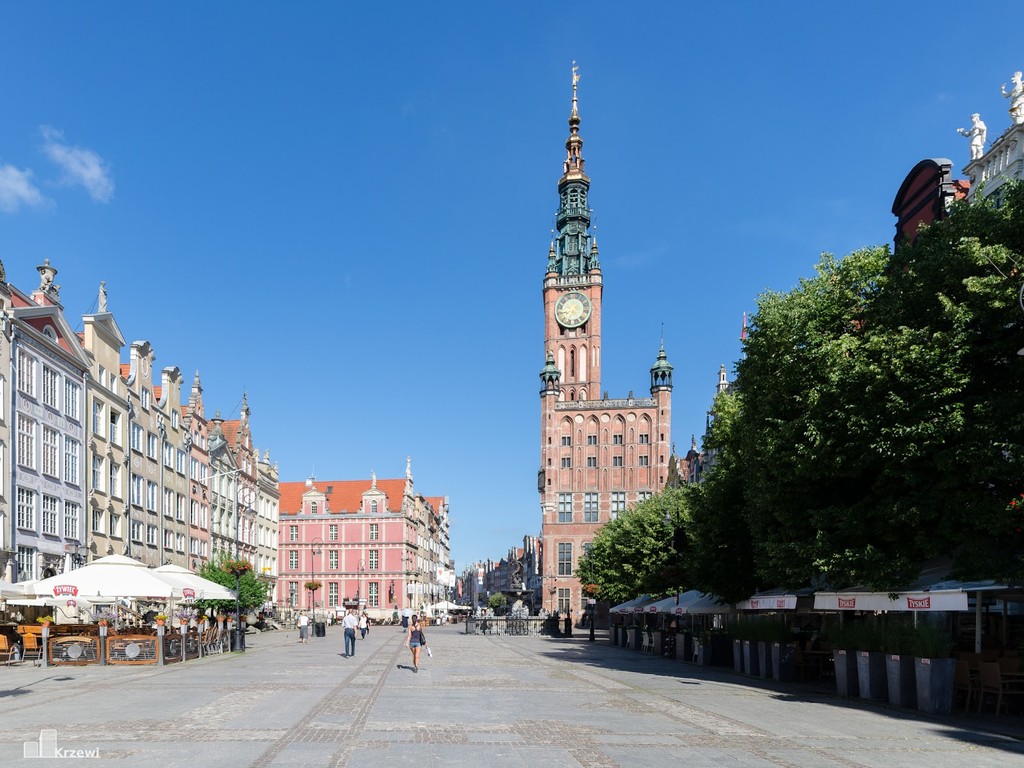
Main Town Hall (Ratusz Głównego Miasta) (Source: Google Maps)
The Main Town Hall is a stunning Gothic-Renaissance structure that stands as a symbol of Gdańsk's rich history. Constructed in the 14th century, it features intricate brickwork and a prominent tower that reaches 80 meters in height. The hall served as the city's administrative center and is adorned with remarkable sculptures and a beautiful clock. Inside, visitors can explore the ornate interiors, including the Grand Hall, which showcases a collection of historical artifacts and artworks. The Town Hall is not only a significant architectural masterpiece but also a testament to Gdańsk's role as a major trade hub during the Hanseatic League.
Golden Gate (Złota Brama)
Continue to the Golden Gate, an ornate entrance to the city’s Royal Route, representing the glory of Gdańsk's golden age.
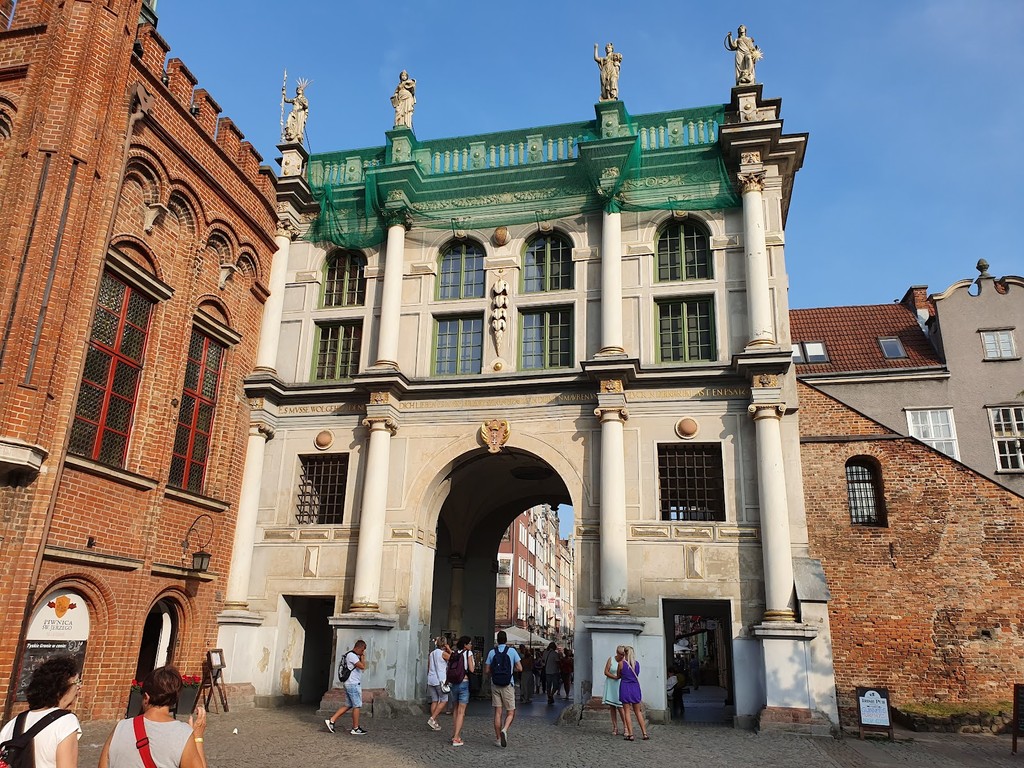
Golden Gate (Złota Brama) (Source: Google Maps)
The Golden Gate is an exquisite example of late Renaissance architecture, serving as a grand entrance to Gdańsk’s Royal Route. Built in the 17th century, it is adorned with intricate sculptures and decorative elements, symbolizing the city’s prosperity during its golden age. The gate features allegorical figures representing virtues such as Justice and Fortitude, and its lavish design reflects the wealth of the citizens at the time. Historically, it marked the boundary between the city and its surrounding areas, welcoming visitors into the heart of Gdańsk. Today, the Golden Gate stands as a prominent landmark, drawing tourists who admire its artistic details and historical significance.
The Great Armory (Wielka Zbrojownia)
Marvel at the Renaissance architecture of the Great Armory, a beautiful building that once stored the city's weapons.
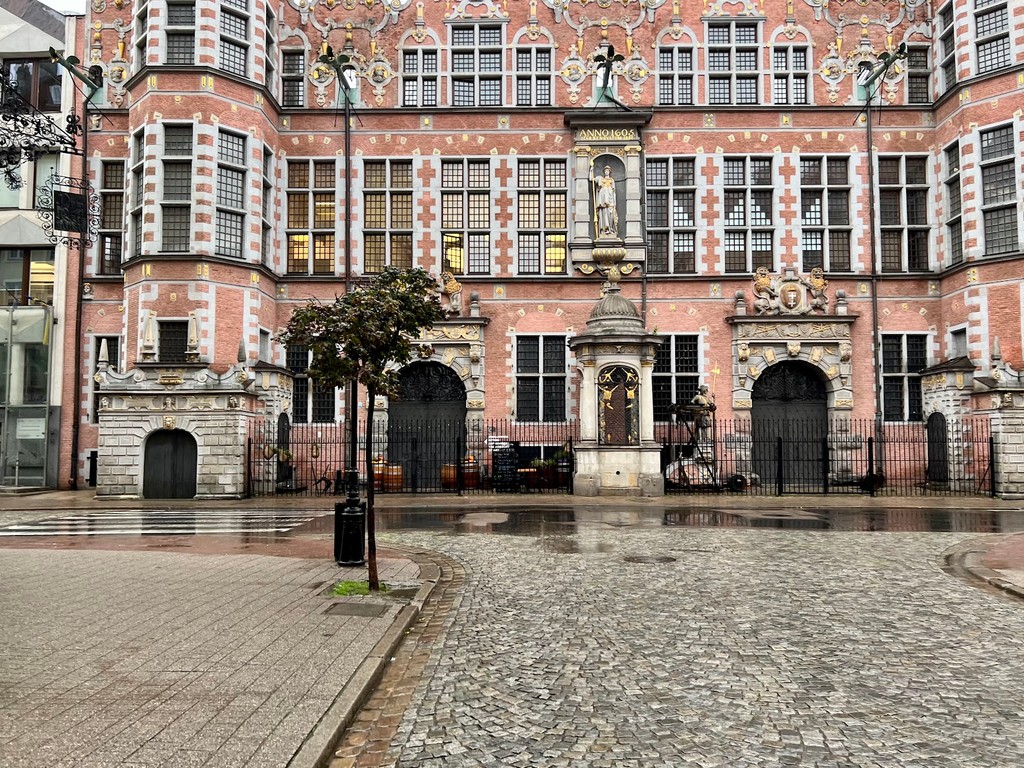
The Great Armory (Wielka Zbrojownia) (Source: Google Maps)
The Great Armory, a remarkable Renaissance building, was constructed in the late 16th century to store weapons and armaments for Gdańsk's militia. Its striking facade, adorned with ornate decorations and statues, exemplifies the city's architectural prowess. The structure features a unique blend of Gothic and Renaissance styles, with an impressive central gable and elaborate brickwork. Historically, it played a crucial role in the defense of the city, housing not only weapons but also armor and military equipment. Today, the Great Armory is home to the Gdańsk Historical Museum, where visitors can delve into the city’s past and explore exhibitions showcasing its rich cultural heritage.
St. Catherine's Church (Kościół św. Katarzyny)
Discover St. Catherine's Church, the oldest church in Gdańsk, known for its historical significance and beautiful carillon.
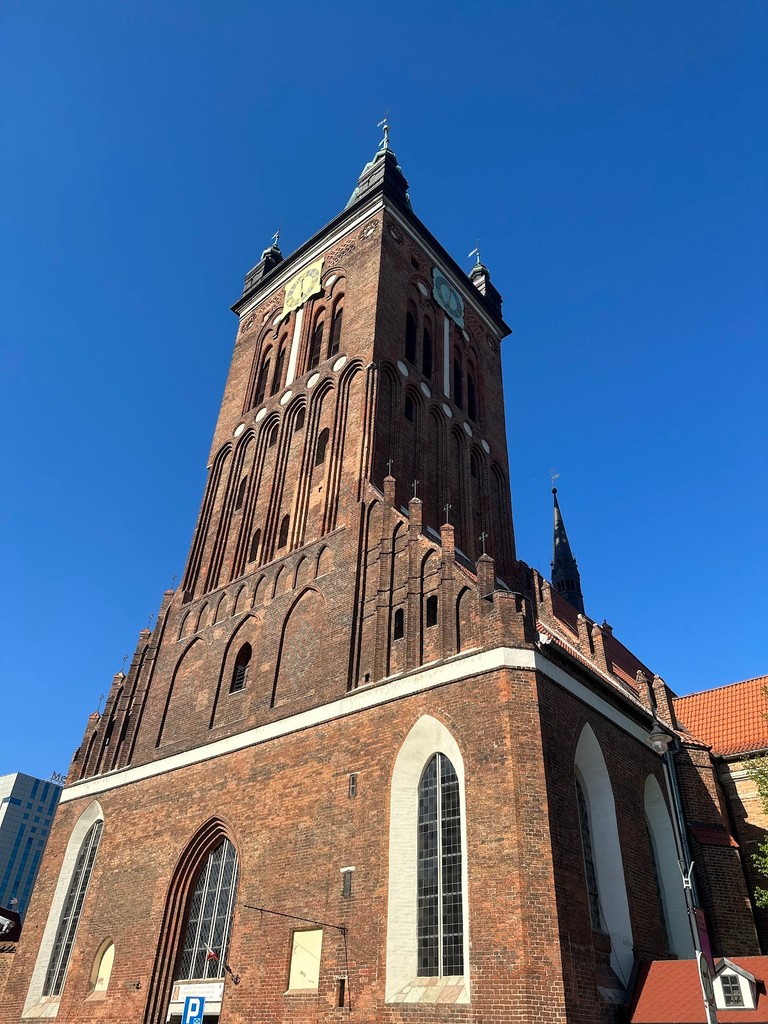
St. Catherine's Church (Kościół św. Katarzyny) (Source: Google Maps)
St. Catherine's Church is the oldest church in Gdańsk, dating back to the 14th century. Known for its remarkable Gothic architecture, it features a stunning brick exterior and a tall tower that offers panoramic views of the city. The church is renowned for its beautiful carillon, which plays melodies that resonate throughout the area. Inside, visitors can admire intricate altarpieces, historical artifacts, and the impressive organ that dates back to the 18th century. St. Catherine's Church has been a significant religious site for centuries and continues to be a place of worship and cultural events, reflecting Gdańsk's deep-rooted spiritual history.
St. Mary's Church (Bazylika Mariacka)
Visit St. Mary's Church, the largest brick church in the world, and admire its impressive Gothic architecture.
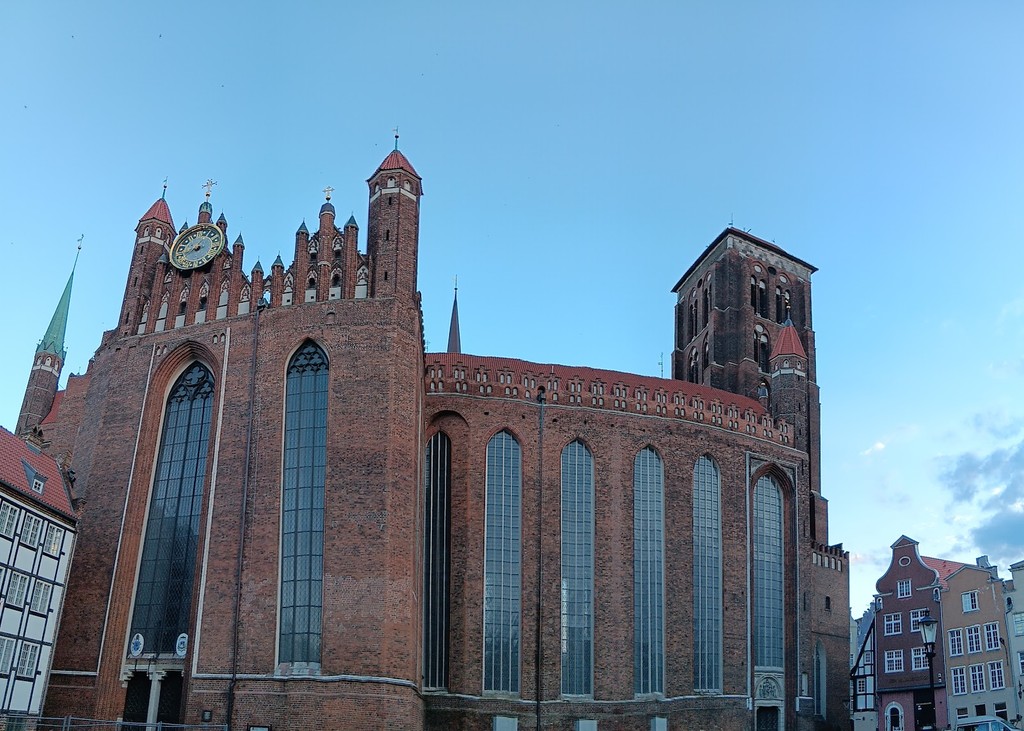
St. Mary's Church (Bazylika Mariacka) (Source: Google Maps)
St. Mary's Church, the largest brick church in the world, is a stunning example of Gothic architecture that dominates the Gdańsk skyline. Construction began in the 14th century, and the church features an impressive interior with soaring ceilings, intricate stained glass windows, and a remarkable altar. The church is also home to a significant collection of art, including works by renowned artists. Its tower, standing at 78 meters, offers breathtaking views of the city and the surrounding area. St. Mary's Church has played a vital role in Gdańsk's history, serving as a place of worship, a cultural hub, and a symbol of the city's resilience through the ages.
The Crane (Żuraw)
Head to the iconic Crane on the Motława River, a symbol of Gdańsk's maritime history and a remarkable piece of medieval port architecture.
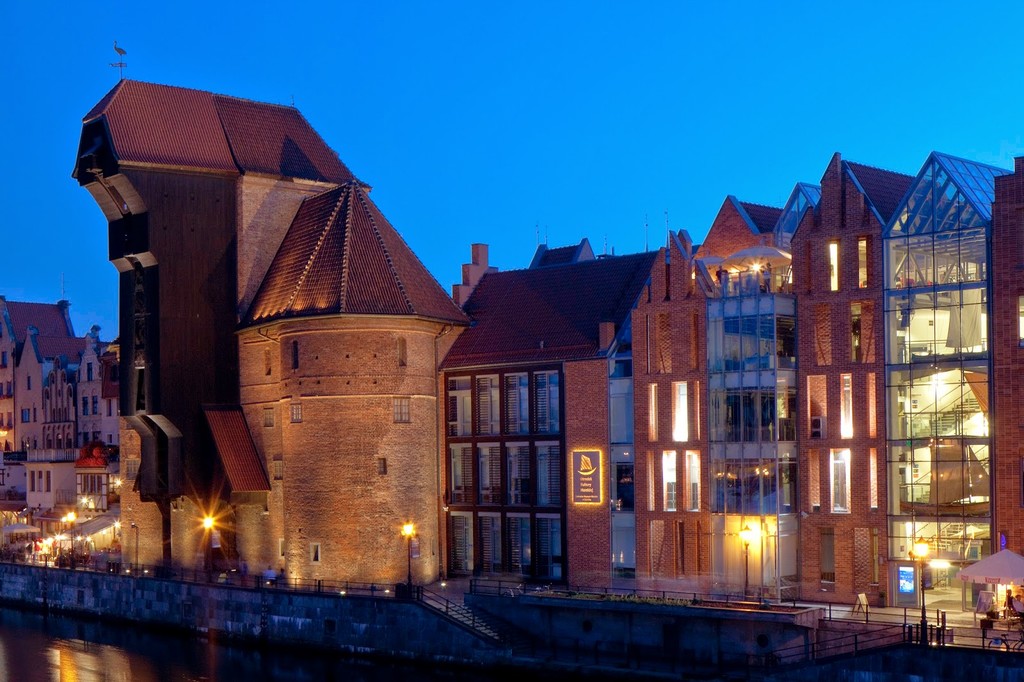
The Crane (Żuraw) (Source: Google Maps)
The Crane, or Żuraw, is an iconic medieval port crane that symbolizes Gdańsk's maritime heritage. Built in the 15th century, it was used to load and unload cargo from ships, showcasing the city's importance as a trading hub. The structure features a unique design, with a wooden hoisting mechanism that allowed it to lift heavy loads. The Crane is a remarkable example of medieval engineering and architecture, with its distinctive wooden frame and brick base. Today, it houses a museum that provides insight into Gdańsk's shipping history and the role of the Crane in the city's economic development. Visitors can explore the exhibits and enjoy views of the Motława River from this historic landmark.
Long Market (Długi Targ)
Stroll through the Long Market, a bustling street lined with colorful buildings and a hub of cultural activity in the city.
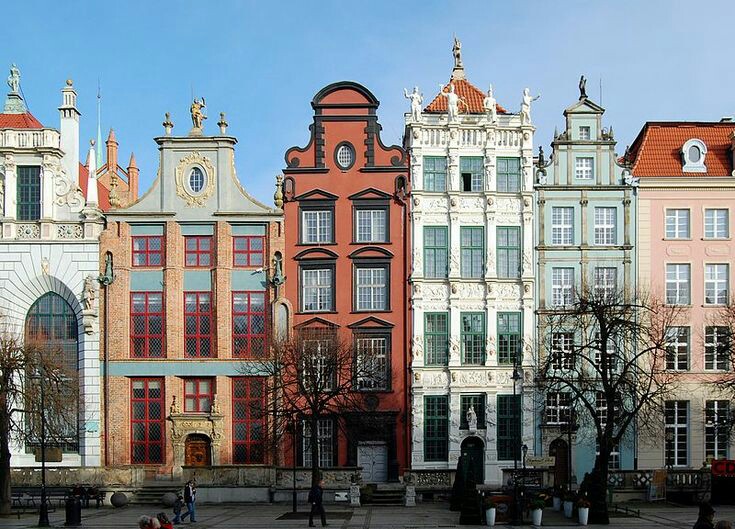
Long Market (Długi Targ) (Source: Google Maps)
Long Market, or Długi Targ, is a vibrant street that serves as the heart of Gdańsk's cultural and social life. Lined with colorful facades and historic buildings, it was once the center of trade and commerce in the city. The market features notable landmarks such as the Neptune's Fountain and the Artus Court, reflecting Gdańsk's rich merchant heritage. Visitors can stroll through the bustling street, enjoying the atmosphere of local shops, cafes, and cultural events. Long Market is not only a picturesque location but also a gathering place for locals and tourists alike, showcasing the lively spirit of Gdańsk and its historical significance as a trading city.
Artus Court (Dwór Artusa)
Just a short walk away, the Artus Court showcases the city's Hanseatic League heritage and is a testament to Gdańsk's mercantile past.

Artus Court (Dwór Artusa) (Source: Google Maps)
Artus Court is a historic building that exemplifies Gdańsk's Hanseatic League heritage. Constructed in the late 14th century, it served as a meeting place for merchants and a social hub for the city's elite. The court features stunning Gothic architecture with intricate details and a grand interior that showcases the wealth of the merchants. Inside, visitors can admire exquisite artworks, including paintings and sculptures that reflect the city's artistic traditions. Artus Court is not only an architectural gem but also a symbol of Gdańsk's vibrant commercial past, representing the city’s status as a powerful trading center in the Baltic region.
Neptune's Fountain (Fontanna Neptuna)
Conclude your tour at Neptune's Fountain, an emblem of Gdańsk's connection to the sea and a popular meeting point for locals and tourists alike.
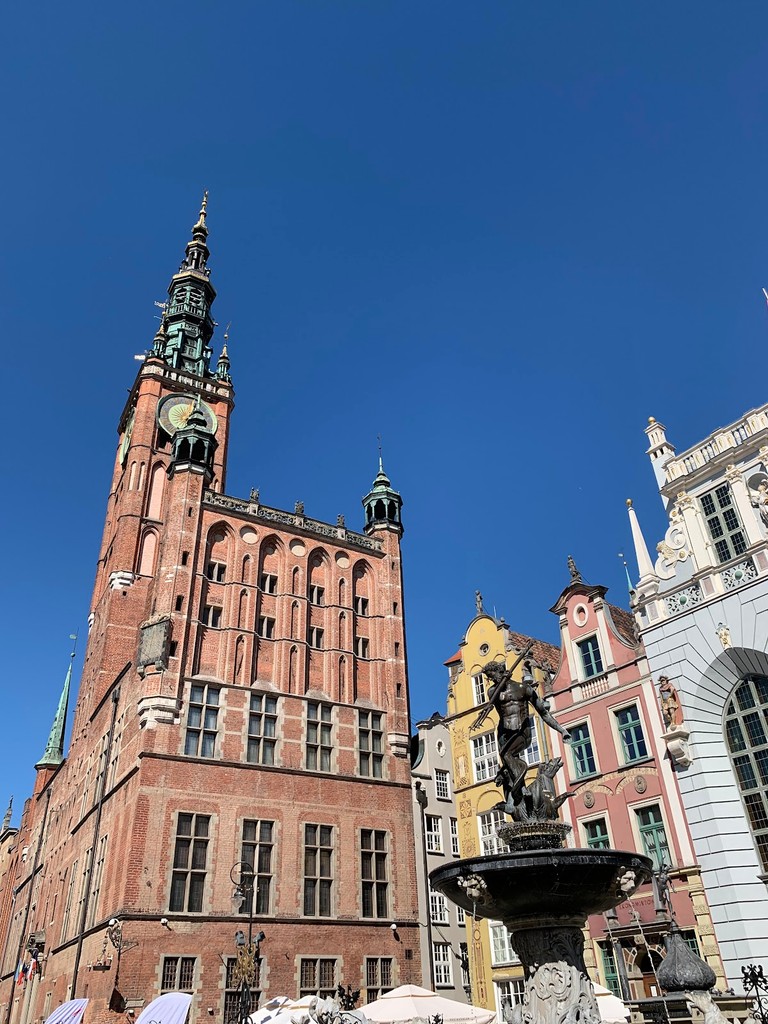
Neptune's Fountain (Fontanna Neptuna) (Source: Google Maps)
Neptune's Fountain is a beloved symbol of Gdańsk, representing the city's strong connection to the sea. Erected in the 17th century, the fountain features a bronze statue of Neptune, the Roman god of the sea, holding a trident and surrounded by water. It was designed to celebrate Gdańsk's maritime heritage and serves as a popular meeting point for locals and tourists. The fountain is beautifully adorned with allegorical figures and is located in the vibrant Long Market area, enhancing the atmosphere of the bustling square. Neptune's Fountain not only showcases Gdańsk's artistic flair but also stands as a testament to the city's enduring relationship with the sea and its significance in the region's history.

Your travels, your rules.
Create your own Free Walking Tours.
Set your preferences, distances and anything you want to do or see.
Completely free, no payment required.